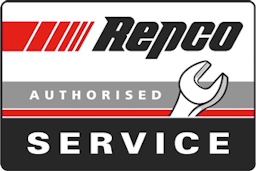Case Study - Carbon Cleaning a Mitsubishi Outlander
Bringing a Tired Outlander Back to Life
Carbon build-up is one of those sneaky problems that gradually robs an engine of its power and smoothness. Modern engines – particularly those with direct injection systems and exhaust gas recirculation (EGR) – are especially prone to soot and carbon deposits. Over time, this build-up can lead to sluggish performance, higher fuel consumption, and even dashboard warning lights.
At Northlands Automotive, we recently had a Mitsubishi Outlander come in that was suffering from exactly these issues. The owner had noticed the car felt flat when accelerating, was using more fuel than usual, and occasionally produced a puff of black smoke under load. With around 80,000 km on the clock and mostly short, stop-start driving around Balcatta, it was a textbook case of carbon accumulation.
Step 1: Thorough Inspection
Before jumping into the cleaning process, we carried out a full diagnostic scan to check for fault codes and look at live data from the engine sensors. We paid particular attention to the EGR flow readings and DPF (Diesel Particulate Filter) status. A visual inspection confirmed heavy soot deposits around the intake system, and the DPF readings showed that it was starting to clog up more quickly than normal.
Step 2: Selecting the Right Cleaning Method
There are several ways to tackle carbon build-up, from walnut shell blasting on petrol engines to hydrogen-based cleaning systems. For this Outlander, we decided on a chemical induction treatment, which would effectively dissolve carbon deposits in the intake system and EGR without the need for extensive disassembly. Because it was a diesel model, we also planned a forced DPF regeneration as part of the service to burn off accumulated soot and restore filter performance.
Step 3: Preparing the Vehicle
With the vehicle up to normal operating temperature, we set up our induction equipment and ensured everything was secure and safe. This preparation stage is crucial – introducing the cleaning solution correctly allows it to circulate through the intake and combustion chambers, softening and breaking down stubborn carbon deposits.
Step 4: The Cleaning Process
With the engine idling at a controlled speed, we slowly introduced the carbon-cleaning solution through the intake. As the chemical worked its way through, we monitored the engine closely to ensure a smooth and even treatment. Once the chemical process was complete, we used our scan tool to trigger a forced DPF regeneration, raising exhaust temperatures high enough to burn off trapped soot inside the filter.
Throughout the process, we kept an eye on exhaust smoke, air-flow readings, and temperature data to make sure everything was proceeding as expected.
Step 5: Post-Clean Checks and Road Test
After the cleaning procedure, we cleared any stored fault codes and carried out a second inspection of the intake components we could access. The difference was immediately noticeable – the intake passages were visibly cleaner, and the EGR valve showed far less contamination.
The road test confirmed what we had hoped for. The Outlander accelerated more smoothly, idled more quietly, and showed no trace of black smoke under heavy throttle. Fuel consumption readings on the trip computer also suggested an improvement, which the customer was keen to verify over the next few weeks of driving.
Step 6: Long-Term Benefits
Carbon cleaning doesn’t just restore lost performance – it can extend the life of expensive components like EGR valves, turbochargers, and DPFs. By reducing the amount of soot and carbon circulating through the engine, future blockages and warning lights become far less likely.
To help the owner keep their Outlander in good condition, we recommended a few simple habits: using high-quality fuel, occasionally taking the car for a longer highway run to help the DPF regenerate naturally, and sticking to regular logbook servicing so the air and fuel filters stay clean.
This case study shows just how effective a professional carbon clean can be when done properly. By taking the time to diagnose the problem, choose the right cleaning method, and verify the results with a road test, we were able to give this Outlander a new lease on life – saving the owner from potentially costly repairs down the track.
If your diesel or petrol engine is showing signs of "struggling to breathe" you should bring it in to Northlands Automotive in Balcatta for a check over. A Carbon Clean could be just the solution you need...










